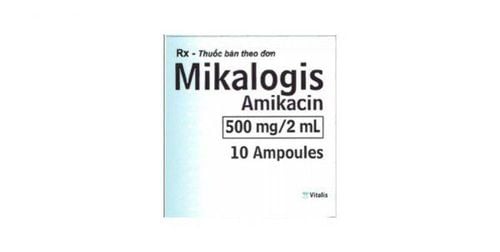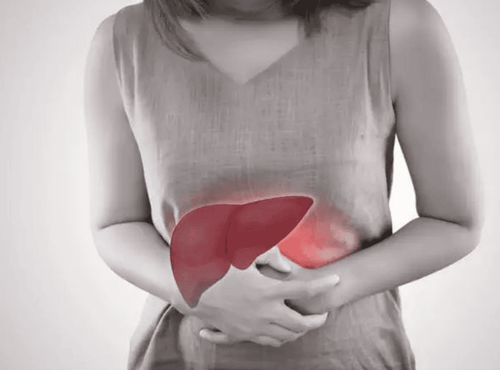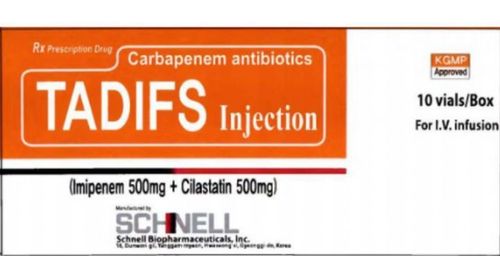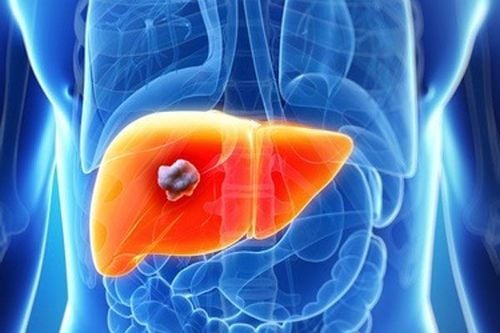This is an automatically translated article.
The article is expertly consulted by MSc.BSCKII Phan Thi Minh Huong - Gastroenterologist, Vinmec Danang International General Hospital.Liver abscess is a fairly common disease in all countries with tropical climates, including Vietnam. This is a serious disease, with a high mortality rate, the disease tends to increase despite improved hygiene and antibiotics have been used quite widely. Knowing how dangerous liver abscesses are will help us proactively prevent disease and protect our health.
1. What is liver abscess?
The liver is an important organ in the body that performs many different functions such as storing energy, making proteins, and removing harmful substances from the body. Liver abscess is a condition in which the liver is damaged, the liver is infected with bacteria or parasites, then the liver will show swelling of pus and the formation of small holes.According to the cause of the disease, liver abscess is divided into 3 main types:
Liver abscess is caused by bacteria, often polymicrobial. Liver abscess caused by ameba, mainly entamoeba histolytica. Liver abscesses are caused by fungi, most of which belong to the Candida family. Inflammatory conditions such as appendicitis, diverticulitis, and cholecystitis are the most common liver abscesses, and parasitic species such as amoeba also cause festering. Most of these conditions occur in poor sanitary conditions.
Trắc nghiệm: Làm thế nào để bảo vệ lá gan khỏe mạnh?
Làm test trắc nghiệm kiểm tra hiểu biết về gan có thể giúp bạn nhận thức rõ vai trò quan trọng của gan, từ đó có các biện pháp bảo vệ gan để phòng ngừa bệnh tật.2. How dangerous is liver abscess?
Liver abscess is a dangerous disease. Symptoms of the disease do not appear immediately, but when they appear, they will take place massively with very severe manifestations. The dangerous symptoms of the disease include:High fever, chills: fever can reach 39 - 40oC in the acute stage, but then it can be mild and last for many days, accompanied by fever and abdominal pain. Pain in the liver: pain is mainly in the right lower quadrant, if the abscess is acute, the pain may spread to the epigastrium or throughout the abdomen. Enlarged liver pain: Because the liver is swollen, the patient feels tight, tight, and heavy in the right lower rib area. Also due to the enlarged liver pushing the diaphragm up, the patient also had difficulty breathing. Painful intercostal pressure: If examined, when palpating, touching the liver (in the intercostal space 11-12), the patient feels increased pain; On percussion, the liver is clearly opaque and the margin of the liver can also be palpable. X-ray image shows the right diaphragm is high, less mobile, right flank angle is blurred along with blood tests: Elevated white blood cell count and elevated erythrocyte sedimentation rate, etc. not very difficult.

Áp xe gan là một bệnh nguy hiểm
Usually, patients with liver abscess, if detected early, will be aspirated, hospitalized for about 7 - 15 days, given antibiotics to prevent recurrence. However, there are patients in critical condition due to poor symptoms. There are patients with a very large abscess but only mild fever, slight discomfort in the right lower quadrant, even just palpating the liver on the flanks, but thanks to ultrasound, a large pus-filled cavity can be detected. In this case, the abscess can rupture causing serious sepsis or rupture and drain into the pleura or lungs, pericardium or cause peritonitis (peritonitis) which is extremely life-threatening.
3. Complications of liver abscess
If not detected and treated promptly, liver abscess patients will be at risk with the following dangerous complications:Complications due to rupture of liver abscess: is the most common complication and also the most dangerous. . When the liver abscess on the left is ruptured, it can burst into the pericardium, the patient has sudden symptoms of shortness of breath, sweating, pale skin, inaudible heart sound, if not promptly emergency patient. may die from acute cardiac tamponade.
Intra-abdominal infection: In case of rupture of liver abscess into the abdomen, it can cause infection of the entire abdomen (also called peritonitis) with symptoms: severe abdominal pain, hard abdomen, high fever. The patient in this case needs timely drainage of the abdomen or emergency surgery to prevent the patient from septic shock and death.
Rupture of the gastrointestinal tract: The liver abscess can burst into the gastrointestinal tract such as the colon and stomach, causing the patient to vomit pus, pass out blood or the abscess burst into the abdominal wall muscle, causing a wall abscess. abdomen or form fistulas that drain pus.

Đau dữ dội vùng gan là biến chứng của áp xe gan
4. Methods to prevent liver abscess
Do not eat uncooked meat such as spring rolls, spring rolls, salad, blood pudding. Do not eat raw vegetables that have not been washed, including vegetables (bean sprouts) served when eating pho, bun cha. Do not drink unboiled water such as water from rivers, streams, ponds and lakes, even water in jars, wells, water tanks, and faucets. Do not use ice and do not eat ice cream that does not meet hygienic standards, and should not drink soft drinks sold on the sidewalk. In agricultural areas where vegetables are grown, fresh manure should not be used to fertilize. Hands should be washed with soap after using the toilet and before each meal. When detecting an infection in the body, it is necessary to go to the doctor for definitive treatment to prevent the bacteria from spreading, especially blood-borne by bacteremia. When a liver abscess is suspected, it is necessary to see a doctor as soon as possible to be sure and have timely treatment, to avoid dangerous complications affecting the patient's life. Above are the basic knowledge about liver abscess. Understanding the disease is the best way for us to proactively prevent disease-causing agents and protect the health of ourselves and our loved ones.
Please dial HOTLINE for more information or register for an appointment HERE. Download MyVinmec app to make appointments faster and to manage your bookings easily.













